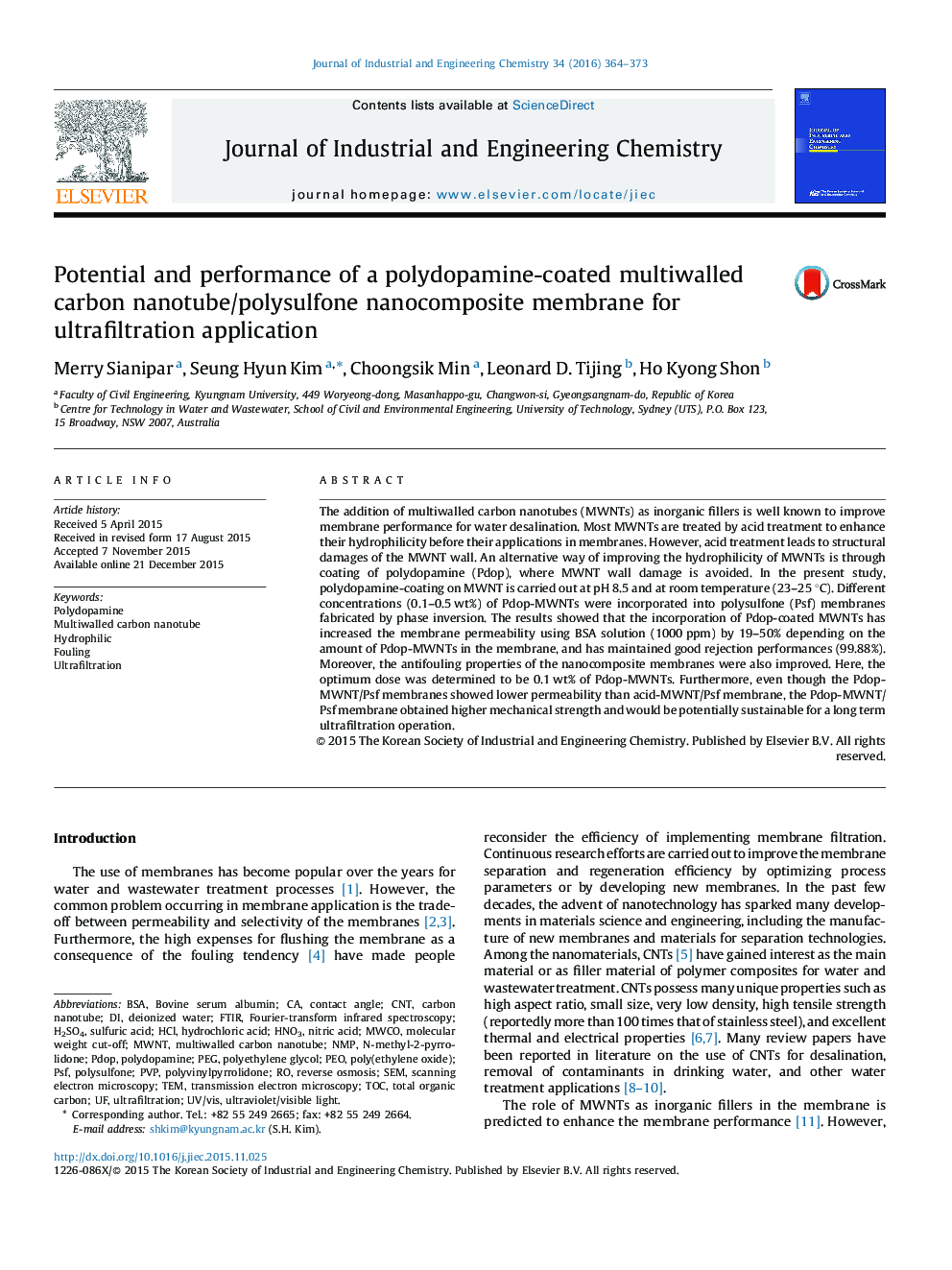| Article ID | Journal | Published Year | Pages | File Type |
|---|---|---|---|---|
| 228265 | Journal of Industrial and Engineering Chemistry | 2016 | 10 Pages |
•Carbon nanotubes were coated with polydopamine to increase their hydrophilicity.•Incorporation of polydopamine-coated MWNTs has improved the membrane performance.•Polydopamine-MWNT/polysulfone membrane showed better mechanical properties.•The nanocomposite membrane showed high potential for enhanced ultrafiltration application.
The addition of multiwalled carbon nanotubes (MWNTs) as inorganic fillers is well known to improve membrane performance for water desalination. Most MWNTs are treated by acid treatment to enhance their hydrophilicity before their applications in membranes. However, acid treatment leads to structural damages of the MWNT wall. An alternative way of improving the hydrophilicity of MWNTs is through coating of polydopamine (Pdop), where MWNT wall damage is avoided. In the present study, polydopamine-coating on MWNT is carried out at pH 8.5 and at room temperature (23–25 °C). Different concentrations (0.1–0.5 wt%) of Pdop-MWNTs were incorporated into polysulfone (Psf) membranes fabricated by phase inversion. The results showed that the incorporation of Pdop-coated MWNTs has increased the membrane permeability using BSA solution (1000 ppm) by 19–50% depending on the amount of Pdop-MWNTs in the membrane, and has maintained good rejection performances (99.88%). Moreover, the antifouling properties of the nanocomposite membranes were also improved. Here, the optimum dose was determined to be 0.1 wt% of Pdop-MWNTs. Furthermore, even though the Pdop-MWNT/Psf membranes showed lower permeability than acid-MWNT/Psf membrane, the Pdop-MWNT/Psf membrane obtained higher mechanical strength and would be potentially sustainable for a long term ultrafiltration operation.
Graphical abstractFigure optionsDownload full-size imageDownload as PowerPoint slide
